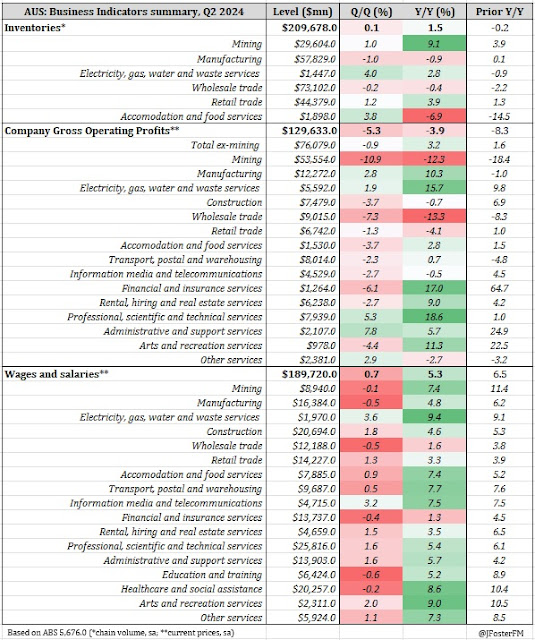Ahead of the June quarter GDP growth figures due Wednesday, the Australian Business Indicators survey was consistent with weak economic conditions. Sales growth, although improved in Q2, contracted over the first half of the year; company profits declined; and private inventories are set to deduct from quarterly growth.
Sales volumes ticked up by 0.2% in the June quarter, only partially rebounding from a 0.6% decline in Q1. That left sales down by 0.4% across the first half of the year. Most notably, demand in consumer-facing sectors has been subject to the headwinds of cost-of-living pressures, higher interest rates and weak sentiment.
After inventories recorded a strong build during the first quarter (1.5%), levels were held broadly flat by firms during Q2 (0.1%). On today's figures, the change between these two outcomes points to a 0.5ppt deduction to GDP growth from private inventories, with details on public sector inventories due tomorrow to complete the picture.
Turning to incomes, company profits declined by 5.3% overall in the June quarter to be down by 3.9% through the year. That weakness heavily reflects a fall in mining sector profits (-10.9%q/q, -12.3%Y/Y) as commodity prices have retraced from elevated levels. Margin pressures due to rising input costs and softening demand saw non-mining sector profits decline by 0.9% in Q2, though profits have still risen over the year (3.2%).
Growth in wages and salaries eased to a 0.7% rise in the latest quarter, resulting in annual growth slowing from 6.5% to 5.3%, a low since Q1 2022. The slowing in the pace of the wages bill is generally reflective of eased tightness in the labour market as well as other factors including moderating increases from larger earlier wage rises in a high inflationary backdrop.





